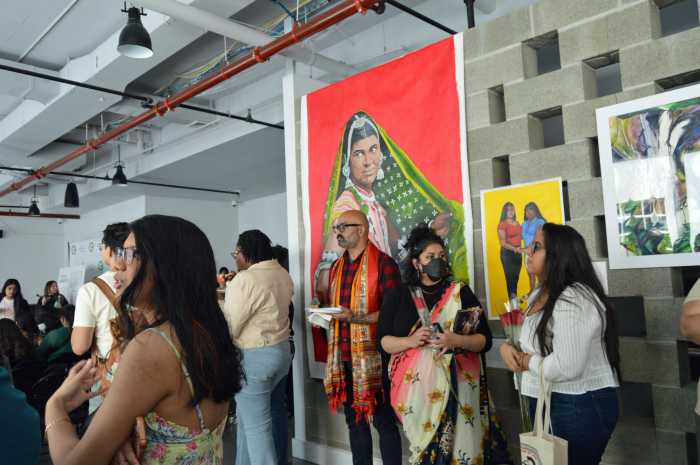Culture and customs are two significant aspects of a people’s history. They define who we are. Therefore, it is only by knowing our history that we can know who we are. The preservation of these antiquities helps maintain one’s place in the world from generation to generation.
The oneness of the people throughout the African Diaspora was evident during the 42nd Annual International Arts Festival held at Brooklyn’s Commodore Park during the 4th of July weekend.
A survey of the festival’s attendees indicates that very few know how it began; and it is just a coincidence that it falls on the July 4th weekend. Brother Hakika Tomia, one of the organizers, tells of the time when it began on Claver Place in 1969 as a street fair and was associated with a Private Independent African school operated by the late Jitu Weusi.
Community attendance outgrew Claver Place and the Fair was relocated to the Boys & Girls High School Field on Fulton Street, where the late Frank Mickens was principal. At this location, the admission fee at the gates helped to fund high-profile entertainers from pan-African countries, such as The Mighty Sparrow from Trinidad and Fela from Nigeria. It also attracted local artists such as Gil Scott-Heron and Stevie Wonder. The cover charge helped fund the various activities. It was a period of great illumination.
The Festival was soon forced to find another location because of the renovation of the Boys & Girls field, and ”for the past 11 years it has operated from its current location at Commodore Barry Park, reulting in a loss of revenue from the gates, since this is a city park and organizers must rely on donations. It has become more of a struggle to provide the same type of high-profile pan-African artists. Current economic situations also contribute to the hardship. However, the goal of the Festival will always be, ”to keep culture alive throughout the Diaspora and to support other initiatives such as Kwanzaa and Jazz”.
High quality entertainment and activities continue to prevail. The theme for this year’s festival is: “Ndunga” or “Justice” (Congolese) — a most fitting theme, considering the plight of African communities throughout the world.
The parade on Saturday brought the festival from inside the park, out into the surrounding community for additional exposure. Dr. Segun Shabaka, secretary and executive committee member, describes the festival as ”a richly unique Pan-African cultural extravaganza and experience.
All vendors are from the African Diaspora. Attendees witnessed an outstanding line-up of artists from all genres of entertainment, such as: R&B, Hip-Hop, Jazz, Gospel, South African, Caribbean, and Brazilian. Music and Dance, the traditional African marketplace: food, crafts and much more. It continues to be a safe environment for children with a variety of games, storytelling and family fun.
Included in the activities was a one-day Educational Symposium discussing a wide range of topics related to Justice. Members of the panel and invited speakers included: New York State Senator Eric Adams, Prof.Sam Anderson (Black New Yorkers for Educational Excellence (BYNEE)), Michael Hooper (Roots Revisited), Attorney Darius Charney (Center for Constitutional Rights), Milton Allimadi (Black Star News), authors and other distinguished literary figures.
Judging by the attendance over the weekend, it is evident that this Festival has become a staple in the community. Visitors from near and far come to show their support.
This support must now be translated into substantial donations from the grassroots, which can be used to sustain this historical, cultural extravaganza, for the oppressor will never finance our freedom, liberty or justice.



























